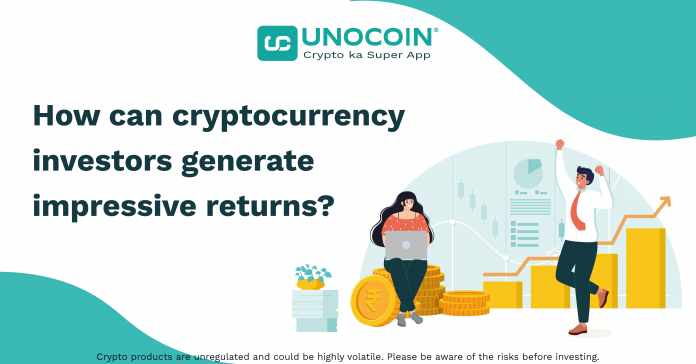What is DeFi?
Decentralised Finance (DeFi) is a new and emerging financial technology that allows users to use and provide financial services without relying on a third party. Transactions are secured using blockchain/distributed ledger technology that is similar to cryptocurrencies.
In traditional centralised finance, when consumers trade, save and invest, they rely on a centralised entity, a credit card company,Visa, a bank, or an investment management company to make a profit. Thus,they are usually limited to the cost of the consumer.
While cryptocurrency solves the problem of having a middleman at the centre of every monetary transaction, DeFi aims to cut out the middleman from the saving/lending /investing process, therefore removing fees here as well.
Currently, individuals can secure loans and other financial services without credit checks, or go through a Know Your Customer (KYC) process, as long as they have sufficient collateral (usually in the form of cryptocurrency) to post.
dApps are the heart of DeFi, and the health of a smart contract-enabled blockchain DeFi ecosystem can often be measured by the number of different dApps it has running.
Those looking to procure can go to the websites of these dApps, connect their wallets, and put funds into various income-producing strategies as they choose. Those looking to borrow can use various DeFi platforms to leverage against collateral (usually Bitcoin or Ethereum).
How can you use DeFi to generate income?
Generating revenue in DeFi, often referred to as “yield farming”, can be done in a number of ways. Some of the most popular methods are summarised below:
1) Staking – Proof of Stake (PoS) cryptocurrencies require a certain number of holders to stake their crypto for a specific amount of time to secure the network. This is called “Staking” and the staked cryptocurrency holders are compensated through a return (almost always in the same cryptocurrency as the stake).
According to www.staked.us, Ethereum (2.0), Cardano and Solana stakers can expect a return between 4-6%. Most centralised cryptocurrency exchanges will allow users to stake their crypto on their website, but it is also possible to stake crypto through various dApps.
2) Providing Liquidity – When crypto investors provide liquidity, they are essentially providing their crypto into a pool that facilitates trading on a decentralised exchange (a type of dApp, also referred to as a DEX) or other types of DeFi application. Unlike centralised funding, where there is a high barrier for outsiders to enter the world of market making, crypto liquidity providers (LPs) can participate using Automated Market Makers (AMMs), one of DeFi’s most promising emerging technologies.
In most cases, potential LPs will need to provide liquidity in both cryptocurrencies of the trading pair they are providing liquidity for. Crypto holders can become LP using a number of DEX platforms. Among the most popular are Uniswap, PancakeSwap, Orca, Curve Finance and SunSwap. Returns can vary greatly depending on the perceived riskiness of the respective cryptocurrencies.
3) Lending – Cryptocurrency holders can use a variety of centralised and decentralised applications to lend their tokens to borrowers by locking their cryptocurrencies in “safes”. The rate on leading cryptocurrencies such as Bitcoin and Ethereum is usually quite low, but the rates on stablecoins can be very attractive (anything up to 30%). Some examples of the most popular DeFi Lending platforms include AAVE, Compound and JustLend.
What are the risks?
Given the newness of the DeFi space and its lack of regulation, potential investors face a number of risks. Some of the main ones to note are summarised below.
1) Risks of Smart Contracts – DeFi is powered by smart contracts which are essentially just code. Poorly written codes are prone to exploitation, thereby, risking security of funds invested by potential DeFi investors.
2) Volatile loss – Some investment tactics in DeFi, such as staking and liquidity provision, require investors to lock-up funds for a certain period of time. During this time, the price of cryptocurrencies can fluctuate wildly, making the investors prone to losses.
3) Rug Pulls – This is when a fraudulent developer creates a new DeFi token with the intention of pumping up the price to attract gullible investors to then extract as much value as possible before abandoning the project and leaving the token value to fall to zero. Sometimes the investors who bought scam tokens are not even able to sell them. This happened with the Squid token last year. Unfortunately, due to the lack of regulation to protect investors from bad actors, DeFi is full of such pitfalls.
4) Regulatory Risk – There is currently no regulation in the DeFi space. But that could change quickly in the coming years, and the impact on investment across the space will be hard to gauge.
5) Market Risks – Stablecoins play a key role in the DeFi space, with investors looking to lend them at high yields, and borrowers looking to borrow against collateral. But as seen earlier in the month with Terra’s UST algorithmic stablecoin, investors in stablecoins have to reckon with the risk of de-pegging, which could see them lose much or all of their capital.
The current state of the DeFi market
According to DeFi analytics site DeFi Llama, the total Trade Value Locked (i.e. the total amount of money tied up in DeFi smart contracts) in the entire space is just under $100 billion as of 26th May 2021. This compares to a TVL of more than $172 billion at the start of the month and a TVL of more than $220 as late as December.
A sharp decline came as a result of the collapse of the Terra ecosystem, which was triggered by the de-fixing of its USD stablecoin UST and the subsequent “bank run”, such as the influx of capital from the stablecoin that triggered hyperinflation in LUNA. The Terra ecosystem was at one point the second largest in the DeFi space (behind only Ethereum) with a TVL of nearly $22 billion as recently as 5th May, 2021. TVL is now only around $170 million, with the collapse sending a chill across the industry.
Another headwind to the growth of the DeFi space in recent months has been the broad decline in the prices of cryptocurrencies such as Bitcoin and Ether.
Please find the list of authentic Unocoin accounts for all your queries below:
- YouTube Channel: https://www.youtube.com/c/Unocoin/videos
- Newsletter: https://medium.com/subscribe/@Unocoin_growth
- Blogs: https://blog.unocoin.com
- Instagram: https://www.instagram.com/unocoin/
- Twitter: https://twitter.com/Unocoin
- Facebook: https://www.facebook.com/unocoin/
- LinkedIn: https://in.linkedin.com/company/unocoin
- Telegram Group: https://t.me/Unocoin_Group
- Telegram Channel: https://t.me/+fasQhTKBsfA5N2Zl
- Telegram: https://t.me/UnocoinSupport_Bot
- E-mail id: [email protected]
- Contact details: 7788978910 (09:30 AM IST – 06:30 PM, Mon – Sat)
- App store link: https://apps.apple.com/us/app/unocoin/id1030422972?ls=1
- Playstore link: https://play.google.com/store/apps/details?id=com.unocoin.unocoinwallet
Disclaimer: Crypto products are unregulated as of this date in India. They could be highly volatile. At Unocoin, we understand that there is a need to protect consumer interests as this form of trading and investment has risks that consumers may not be aware of. To ensure that consumers who deal in crypto products are not misled, they are advised to DYOR (Do Your Own Research).




